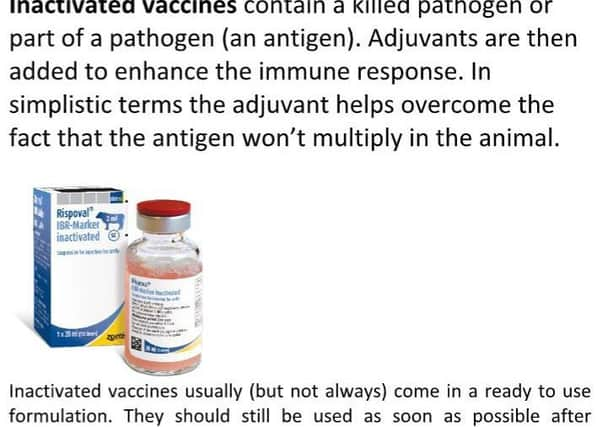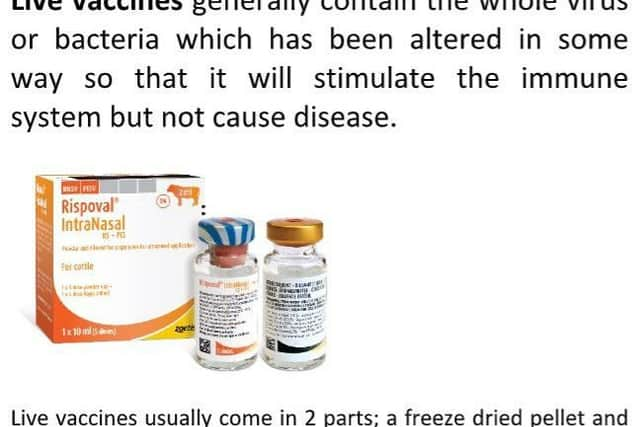Vaccines – What are they and how do they work?


In keeping cattle healthy, vaccines also help reduce our requirement for antibiotic treatments. As such increased use of vaccines is one of the recommendations made by the RUMA* task force to reduce antibiotic use in cattle.
An important tool in our armoury it’s worth understanding more about how vaccines work, and some general considerations for their use.
What Are Vaccines?


Advertisement
Advertisement
Vaccines are medicines which are designed to stimulate the immune system. Animals can be vaccinated against particular viruses, bacteria or parasites so that when they encounter these pathogens for real they are more able to fight off the infection. Vaccines can be either live or inactivated.
How Do Vaccines Work?
Vaccines work by exposing the animal’s immune system to the virus, bacteria or parasite in a safe way. This can have two functions;
Enhanced resistance to disease: The immune system of a vaccinated animal is primed to be able to respond more quickly and more specifically, helping protect the animal from becoming sick.
Reducing viral and bacterial exposure: Sick or infected animals shed large quantities of the virus or bacteria they are infected with.
Advertisement
Advertisement
For example, youngstock with pneumonia will shed pathogens in secretions from the eyes and nose, and in exhaled air, which can go on to infect neighbouring animals.
Vaccination reduces both the number of sick/infected animals and the amount of virus or bacteria they shed.
Key Considerations For Youngstock Vaccine Selection
1. Ensure cover against the likely pathogens for the full risk period
Vaccines should be used which protect against the viruses/bacteria present on your farm for a sufficient period of time to see them through the main risk period (e.g. the winter housing period).
2. Ensure Protection is in place BEFORE challenge
Advertisement
Advertisement
For dairy/dairy-bred calves, late autumn/winter born suckler calves, and bought-in animals this can be difficult. Single dose intranasal vaccines may be most appropriate.
3. Vaccinate ALL animals in the group
Vaccination is in most instances a HERD/GROUP strategy - the best results are gained from vaccinating the whole group within for example an airspace or management group.
4. Consider the age of the animal: passive immunity (from colostrum) can interfere with vaccination in young calves.
Ensuring calves receive adequate colostrum is a vital part of overall calf management, but antibodies absorbed from this colostrum can prevent some vaccines from working. Intranasal vaccines can help to overcome this issue.
5. Avoid stress
Advertisement
Advertisement
Where possible avoid vaccinating at the same time as stressful procedures such as dehorning, castrating and weaning.
The calf needs to ‘respond to’ the vaccine and stress can reduce its ability to do this.
The timing of vaccination may also include practical considerations such as combining vaccination with other management procedures.
Vaccines are an investment in your herd’s health; understanding what they are and how they work helps ensure they are used properly and maximum benefit derived from them.